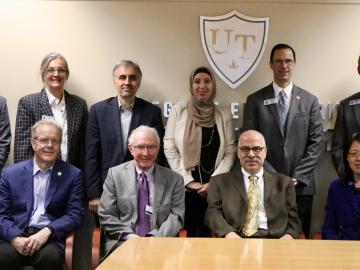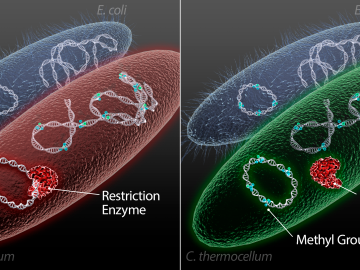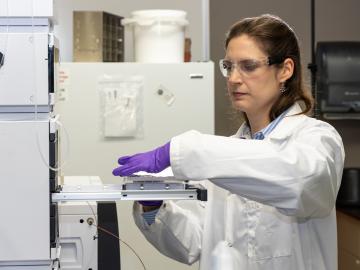
Filter News
Area of Research
- (-) Energy Science (60)
- (-) Mathematics (1)
- (-) National Security (8)
- Advanced Manufacturing (4)
- Biological Systems (2)
- Biology and Environment (88)
- Biology and Soft Matter (1)
- Computational Biology (1)
- Computational Engineering (2)
- Computer Science (1)
- Fusion and Fission (1)
- Fusion Energy (1)
- Isotopes (1)
- Materials (23)
- Materials for Computing (3)
- Neutron Science (12)
- Nuclear Science and Technology (5)
- Quantum information Science (1)
- Supercomputing (62)
News Topics
- (-) Bioenergy (28)
- (-) Composites (17)
- (-) Molten Salt (1)
- (-) Summit (6)
- 3-D Printing/Advanced Manufacturing (81)
- Advanced Reactors (7)
- Artificial Intelligence (19)
- Big Data (11)
- Biology (14)
- Biomedical (7)
- Biotechnology (5)
- Buildings (38)
- Chemical Sciences (14)
- Clean Water (8)
- Computer Science (41)
- Coronavirus (14)
- Critical Materials (9)
- Cybersecurity (25)
- Energy Storage (71)
- Environment (59)
- Exascale Computing (2)
- Fossil Energy (2)
- Frontier (2)
- Fusion (2)
- Grid (43)
- High-Performance Computing (10)
- Hydropower (3)
- Isotopes (1)
- Machine Learning (18)
- Materials (36)
- Materials Science (29)
- Mathematics (2)
- Mercury (3)
- Microelectronics (1)
- Microscopy (8)
- Nanotechnology (9)
- National Security (37)
- Neutron Science (15)
- Nuclear Energy (11)
- Partnerships (16)
- Physics (2)
- Polymers (11)
- Quantum Science (3)
- Security (15)
- Simulation (4)
- Space Exploration (3)
- Statistics (1)
- Transportation (68)
Media Contacts

Scientists at the Department of Energy’s Oak Ridge National Laboratory have developed a new method to peer deep into the nanostructure of biomaterials without damaging the sample. This novel technique can confirm structural features in starch, a carbohydrate important in biofuel production.
A team of scientists led by Oak Ridge National Laboratory found that while all regions of the country can expect an earlier start to the growing season as temperatures rise, the trend is likely to become more variable year-over-year in hotter regions.

A novel approach developed by scientists at ORNL can scan massive datasets of large-scale satellite images to more accurately map infrastructure – such as buildings and roads – in hours versus days.

A technology developed at the ORNL and scaled up by Vertimass LLC to convert ethanol into fuels suitable for aviation, shipping and other heavy-duty applications can be price-competitive with conventional fuels

Researchers at the Department of Energy’s Oak Ridge National Laboratory have received five 2019 R&D 100 Awards, increasing the lab’s total to 221 since the award’s inception in 1963.

ORNL and The University of Toledo have entered into a memorandum of understanding for collaborative research.

Scientists at the US Department of Energy’s Oak Ridge National Laboratory have demonstrated a method to insert genes into a variety of microorganisms that previously would not accept foreign DNA, with the goal of creating custom microbes to break down plants for bioenergy.

A team including Oak Ridge National Laboratory and University of Tennessee researchers demonstrated a novel 3D printing approach called Z-pinning that can increase the material’s strength and toughness by more than three and a half times compared to conventional additive manufacturing processes.

Electro-Active Technologies, Inc., of Knoxville, Tenn., has exclusively licensed two biorefinery technologies invented and patented by the startup’s co-founders while working at the Department of Energy’s Oak Ridge National Laboratory. The technologies work as a system that converts organic waste into renewable hydrogen gas for use as a biofuel.

Early career scientist Stephanie Galanie has applied her expertise in synthetic biology to a number of challenges in academia and private industry. She’s now bringing her skills in high-throughput bio- and analytical chemistry to accelerate research on feedstock crops as a Liane B. Russell Fellow at Oak Ridge National Laboratory.


